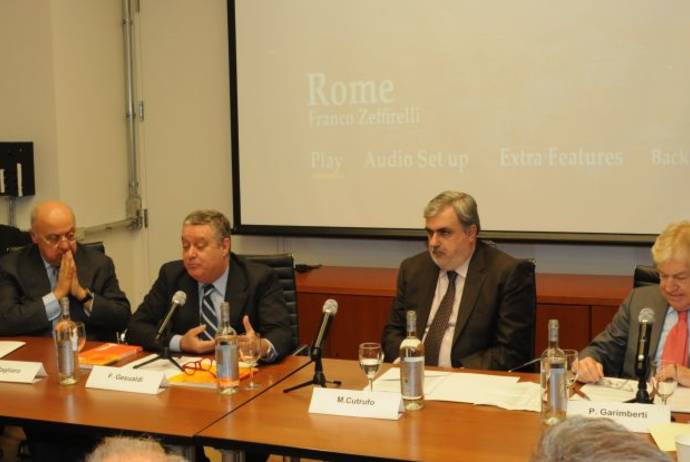In the Spring of 2010, right in front of MOMA, on 53rd street between 5th and 6th avenue, there will be a new addition to the artistic landscape of the already bustling NYC cultural life.
Scheduled to open in May, the TNYC (The Triennale Museum in NYC) born from a collaboration of Artlivingny and the original museum in Milan, is also going to become a new showcase for Italian identity-related events and products and to tighten the relationship between Milan and the Big Apple. TNYC was designed by Pier Luigi Cerri and Michele del Luchi, two Italian architects and CUH2a, JLL Project Manager and Sciame Constractor Manager.
As the former director of the Italian cultural institute, Professor Renato Miracco pointed out that Italians, especially those living in Milan, are familiar with the Triennale Museum and its display of innovative design and exhibits, but people here in the United States are not necessarily acquainted with Triennale. Therefore, “this will be an opportunity to integrate American design with Italian design, and focus attention on both. People will be coming out of the MOMA and can explore a more specific or unique exhibit right in TNYC”.
At RAI Corporation, on January 25 2010, the project for the new museum was presented and the architecture was shown through pictures on the wall as well as a 3D simulation of the rooms and sections.
The museum is comprised of four floors of 18,067 square feet where “more “traditional” culture will mix with modern technology”, as Massimo Magliaro, president of RAI Corporation, said. He underlined how “this won’t just be an episodic collaboration, but an organic one with the possibility of many events organized together and a reinforcement of the “Italian System (Sistema Italiano) in NY”.
The first exhibit will be dedicated to the Internationally famous designer Giò Ponti and will be curated by Germano Celant and the scientific committee of the Triennale Milano. TNYC will work on creating a calendar full of interesting events, in the realm of fashion, cinema and art.
The museum’s top level has a coffee shop and a wine-bar, a space for the visitors of the museum to sit and relax, and eat and drink as well, either for a tasty breakfast or a sophisticated happy hour.
Around 12:30 PM eastern time, the President of RAI Corporation Massimo Magliaro, the General Consul Francesco Maria Talò, the President of Artlivingny Roberto Manzoni and the banker Rocco Zullino, who financed the project, connected live with Milan, sent their greetings and expressed their enthusiasm for the project; at the same time in Milan, there was the inauguration of the Roy Lichtenstein exhibit (Roy Lichtenstein: Meditations on Art, 26 January-30 May 2010). Through a webcam on a big screen the two rooms could see each other and celebrate this future inauguration together.
The Consul, Mr Talò, emphasized the importance of looking at Italy, with its diversity of regions, tastes and folklore and “Italianità” (Italian specificity) as a bridge between the local and the global (“Glocal”). He underlined how Milan and NYC have similar energies and life-style,s and they are already aligned in their view of the world, work and culture; a view that allows people to project themselves globally and go beyond their regional limits.
Roberto Manzoni explained how the “illumination” for this project came to him: walking outside of the MOMA, seeing the actual location in front of his eyes and feeling enthusiastic for something that can “conquer” New Yorkers and Americans in general.
New York is the first and maybe the most important step in expanding the Triennale Museum franchise, being the metropolis that is most devoted to Art, particularly Modern Art. The goal of the organizers is to open even more museums in Moscow, Berlin, New Delhi and in other cities.
Rocco Zullino recounted the reasons for his involvement through the Hottinger Group Bank. He immediately liked the concept and the possibility of representing cultural and artistic ideas, but especially the opportunities that this museum will open for big and small businesses and Italia societies and “made in Italy” products.
In order to coordinate the different speakers, Renato Miracco, who translated and showed his excitement for TNYC, played a central role, hoping that “the exhibits will alternate between Italian and American artists and will merge the efforts of both countries towards design, not just focusing on one or the other.” In regards to RAI Corporation’s involvement, Miracco, who, over the years, has always contributed to promote cultural events, said that it will be interesting to see how the space can host different projects and if there will be an exchange of video and media-related events linking the different contributors behind this enterprise.




































